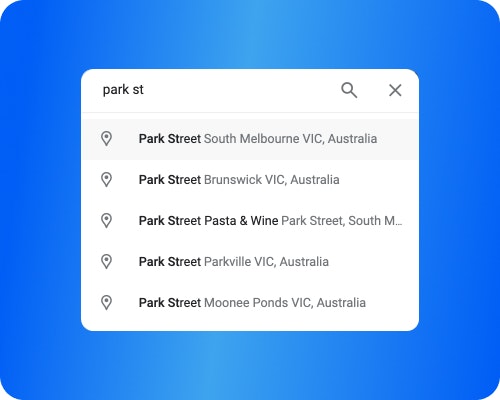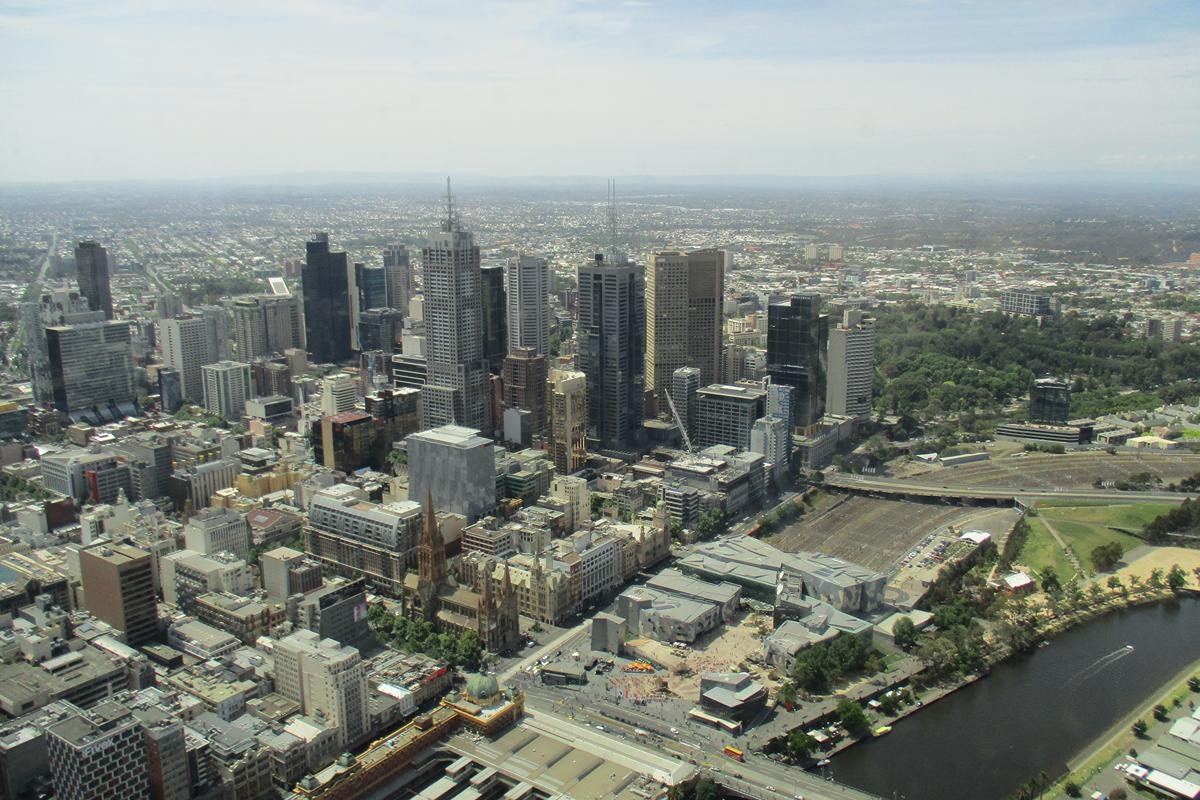Deciphering Addresses in Australia
A brief explanation of how to read and understand addresses in Australia.

By:
PAUL MORREN
Last Updated:
Dec 16, 2024
Tags:
#first-steps
In this article
I know what you're thinking - This must be the most basic article ever written, anyone can read an address!
But hold on a moment, don't judge so quickly. Addresses in Australia are structured differently from most countries in Latin America, and they are extensively used in everyday life.
In this article, we're going to break down the key parts of an address in Australia, look at the most common variations, and give you some tips on how to avoid some of the most common mistakes.
Let's get started!
Why is understanding addresses important?
Addresses are a key part of everyday life in Australia, and something you'll need to recite frequently in your first months here. Many of the tasks you will need to complete in your first week in Australia will require an address.
Almost every entity in Australia will ask you for your address, usually when you're registering or opening an account. This means that every time you're applying for a new service (such as electricity or phone), opening a bank account, or simply using an app like Uber or Amazon, you'll need to make sure you're entering the address correctly.
Knowing how to write your own address correctly is essential. In Australia, everything gets delivered to your address - government communications, your new Tax File Number, bank cards, student cards, papers sent from the GP (doctor), they all come to your address.
Another important point is that in many of the first jobs you might have (for example, in cleaning, hospitality), they give you an address for the workplace, and you have to get there. So, knowing how to interpret the address can save you from getting lost or arriving late for a shift.
And here's a little anecdote that happened to me in Melbourne.
Lina's experience
I was hired by a cleaning company to clean houses for wealthy people in various very exclusive areas of Melbourne. The company would send me the addresses, and I would go and clean the houses for 3 or 4 hours, then I would invoice them and send it to the company for payment. One day I received an address, but this time it was for an apartment. However, I was overconfident and said to myself, "I roughly know where it is" and I got ready to go. When I arrived in the neighbourhood, I started looking for the address, and it seemed a bit confusing, to be honest. In the end, I found a building, rang the buzzer, and someone opened the door from the apartment (in Australia, there are no doormen at the entrances of buildings). When I got upstairs, a grey-haired man in a robe opened the door. He looked like Hugh Hefner from the Playboy bunnies. I told him I was the cleaner and that I had been hired to come and clean that day. A little surprised, he said he didn't know about that but that most likely his girlfriend had hired the service without telling him. He let me in and showed me where the cleaning supplies were. I started doing my work, and when I was about halfway through, the man told me he had to leave but to make myself at home. He left me alone without even knowing me or knowing if I was the person who should be there. Australians are very trusting. When I finished, I closed the door and left. That night I received a message from the cleaning agency asking me how my work had gone. I replied, puzzled, that it went well and asked if there had been any problems. They told me that the lady from the apartment who had requested the cleaning had called to say that no one had come to clean that day. You know what happened? I cleaned the wrong house! I got the address wrong; the building was on the next block, all because I didn't look carefully and didn't know how to interpret the addresses.
So, to avoid this happening to you, take a good look at this explanation.
The Structure of an Address
The good news is that the format of addresses in Australia is very well structured, no matter where in the country you are, the address will follow the same format. Like everything else, there are some small variations, but we'll talk about them later in this article.
Take a look at the infographic below, where each individual section is broken down step by step.

Unit number/house number/building name
The first part of an address is the exact number of the apartment, house, or building where the person lives or the business is located. This is used when there are multiple residences/apartments/offices in the same block. This is commonly seen for high-rise buildings in the city, apartment blocks, gated communities. This section can be written in different ways - see common variations below. This first part is common but not mandatory to have a valid address in Australia.
Street number/name
This is a mandatory component of every address, and the most important part for locating an address you're going to in person.
This contains:
A number: This is the number of the block of land on that street. All odd numbers will be on one side of the street, and all even numbers will be on the opposite side. This is normally visible from the road.
A name: As the name suggests, it is the name of the street or road where the address is located. Usually, the names have been put by the municipal council, it can be a common name or something strange.
The type of street: If it's a street, road, avenue. They are often abbreviated as Rd (Road), St (Street), Av (Avenue). This doesn't mean much, but be careful to look at the types of streets because the name of the street may be repeated in different suburbs (see the tip below).
Every address has the 3 components mentioned above and knowing these plus the name of the suburb can get you where you need to go.
Suburb
Is the name of the locality where the address is located - similar to the neighbourhood. In cities, suburbs are usually clearly defined, but in new housing developments, the boundaries can be a bit blurry.
This is a mandatory component in every address.
Postcode
A postcode is like a zip code in the USA and is like a location code for a suburb (or group of suburbs). It will always have 4 digits, and with a postcode, you can quickly know where an address is from (see the table below).
| Postcode Starts with… | Means its in this State | State Name Abbreviation |
|---|---|---|
| 08XX | Northern Territory | NT |
| 2XXX | New South Wales or Australian Capital Territory | NSW or ACT |
| 3XXX | Victoria | VIC |
| 4XXX | Queensland | QLD |
| 5XXX | South Australia | SA |
| 6XXX | Western Australia | WA |
| 7XXX | Tasmania | TAS |
This postcode is more important for use by the post office - When you send mail to an address within Australia, it is a mandatory field to fill in so that it is directed correctly. It is also commonly used to estimate the price of shipping or calculate the price of insurance with online tools. You should know yours because you will use it frequently.
State
This is the easiest part - The state is like the department in Latin America. Australia only has 6 states (and two territories, which are treated as states but differ slightly in government). States are usually abbreviated when written. For example: Victoria appears as VIC, Western Australia appears as WA.
Common Variations
No one is confused so far. Now we will see some variations where the level of complexity increases.
Which do you think is the difference between the following five addresses?
Acme Inc, Suite 8, The Tower Building, 100 Collins St, Melbourne, Victoria, 3000
8/100 Collins St, Melbourne
Unit 8/100 Collins St, Melbourne
U8 100 Collins Street, Melbourne, 3000
Acme Inc, 100 Collins St, Melb, 3000
It was a trick question - They're all the same address!
Especially when business names, unit or apartment numbers are involved, there are many variations that are considered a valid address. The first of the 5 is the most correct - it shows both components, the name of the business, and the name of the building and clearly shows the number of the business unit. The rest of the options would probably have been enough for the post office to deliver a package or a letter, but that's why it's important to know how to decipher addresses!
Tips and Tricks
Now that you understand the ins and outs of addresses in Australia, here are some tips that can help avoid any problems.
Be careful with the same street name but in a different type of street.
A very common mistake that many residents make is that they don't pay enough attention to the type of street. For example, there is a Brunswick Road and a Brunswick Street, and they are separated by a few blocks. Always be careful when researching the address that you've written the correct one.
Also, be careful in situations where the street name includes the type of street!
For example, there is a road called High St Rd that goes through Glen Waverley and Malvern (suburbs east of Melbourne); however, High St is the name but it's a road and not a street. This same road becomes a street later on. Very confusing.

Many names are repeated in many suburbs
There are many street names repeated in many suburbs that seem to be emerging, for example - Park St, High St, Main St, Union Rd, etc.

Also, suburb names are popular names for some streets - be careful. For example, St Kilda Rd and St Kilda the suburb.
Post office boxes
In many cases, businesses or houses in rural areas do not have mail delivered to the physical property. Instead, they rent a post office box at the local post office. These are called Post Office Boxes or PO Boxes for short.
These boxes can be used to register for some services, but if you are registering to study at an institution or for a government service, these entities require a physical address.
If you are ever given a post office box address or you look up where a place is (maybe for a job interview) and you only get a post office box address, make sure to clarify and ask for the physical address because otherwise, you won't have anywhere to go.
No street number?
Very occasionally, you will find that the street has no number. This happens in rural areas or wealthy areas.
For example, a farm may receive mail in the village in a post office box and not have a street number. All the information you will have is "Smiths Farm" or "The red farmhouse," which Google Maps won't be able to find. In these cases, the person giving the address knows how confusing it is and will give you detailed instructions on how to find the address - but don't hesitate to ask if you're not clear on how to get there.
To summarise
There you have it! Now you understand all the complexities of Australian addresses and have all the tools you need to use them in your daily life.


